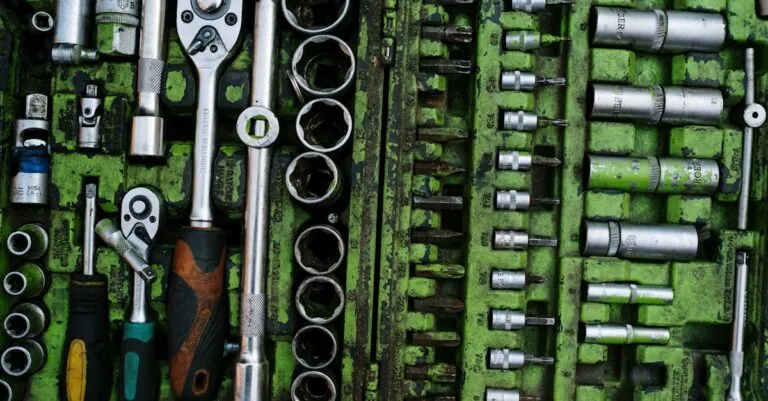In the battle against dirt and grime, floor mats often get the short end of the stick. They bravely absorb mud, spills, and who-knows-what, but how often do they get a little TLC? Enter the hero of this story: floor mat rotation. Yes, folks, it’s time to give those hardworking mats a break and let them take turns in the spotlight.
Table of Contents
ToggleImportance of Floor Mat Rotation
Floor mat rotation plays a critical role in preserving both the aesthetic and functional qualities of mats. Mats collect dirt and moisture, which can become embedded in the fibers if left unchecked. Regularly rotating mats promotes even wear across surfaces, preventing specific areas from deteriorating faster than others.
Effective rotation schedules depend on traffic patterns and usage. In high-traffic areas, he or she must rotate mats at least once every two weeks. This practice minimizes wear and extends the lifespan of the mats significantly. Employees familiar with mat care can identify mats that require attention and spot potential hygiene concerns before they escalate.
Preventing slip hazards is another key benefit of rotating floor mats. As dirt and spills accumulate, the risk of slips increases. Regularly rotating mats helps maintain traction and cleanliness, creating a safer environment for everyone.
Cleaning frequency also impacts the importance of rotation. A damp or soiled mat becomes less effective at capturing dirt and moisture. Swapping out mats for cleaning revitalizes the entire space, ensuring each mat can function at its best.
Incorporating rotation into daily maintenance routines enhances cleanliness and reduces replacement costs. By simply adjusting placement and schedule, businesses can achieve more hygienic spaces.
Floor mat rotation thus is not merely a maintenance task; it’s a strategic practice designed to optimize safety, cleanliness, and the overall lifespan of floor mats.
Benefits of Regular Mat Rotation
Regular mat rotation brings numerous advantages for both aesthetics and safety in high-traffic areas.
Enhanced Aesthetics
A clean and fresh appearance benefits any space. Regularly rotating mats helps maintain color vibrancy and texture. Mixed wear patterns prevent unsightly patches from forming, ensuring an even look. A varied layout keeps the environment visually appealing by preventing dullness. Rotating mats also demonstrates a commitment to cleanliness and maintenance, which impresses visitors and employees alike. By enhancing the overall appearance, strategic mat rotation adds to the professional vibe of any establishment.
Improved Safety
Safety increases significantly with proper mat rotation. Mats that receive attention in rotation maintain their grip, reducing slip hazards effectively. Regularly repositioned mats avoid buildup of dirt and debris, which can create dangerous walking conditions. By promoting freshness, rotation enhances mat functionality, allowing for better absorption of spills. In high-traffic spaces, consistent maintenance of mats contributes to safer navigation, protecting individuals from potential accidents. Prioritizing mat rotation leads to a safer environment overall, ensuring maximum safety for employees and patrons alike.
Best Practices for Floor Mat Rotation
Implementing effective floor mat rotation practices preserves both functionality and appearance. Regular attention ensures mats perform optimally and remain visually appealing.
Frequency of Rotation
Rotating floor mats every two weeks provides significant benefits, especially in high-traffic areas. This frequency minimizes wear and tear, allowing mats to maintain their grip and aesthetic appeal. Indoor mats benefit from rotation as dirt accumulates unevenly, while outdoor mats require consistent attention due to environmental factors. Establishing a rotation schedule tailored to specific locations reduces the risk of slip hazards and extends the mats’ lifespan. Adhering to a routine aids in ensuring mats perform their job effectively.
Proper Cleaning Techniques
Utilizing the right cleaning techniques enhances mat longevity. Regular vacuuming removes dirt and debris, while hotspots require deeper cleaning. For effective maintenance, most mats respond well to a gentle scrubbing with warm water and mild detergent. Keeping cleaning products pH neutral prevents potential damage. Allowing mats to dry completely between cleanings avoids moisture retention, which could lead to mold growth. Establishing a thorough cleaning schedule in conjunction with rotation practices preserves both functionality and visual appeal while promoting a cleaner environment.
Common Mistakes in Mat Rotation
Mistakes in mat rotation can lead to increased wear and reduced functionality. Ignoring the rotation schedule often results in uneven mat wear. Many facilities overlook the importance of regular rotation, thinking that cleaning alone suffices.
Failure to assess traffic patterns also presents a challenge. Different areas experience varying traffic levels, so mats in high-traffic zones require more frequent attention. Skipping the cleaning process before rotation decreases the effectiveness of the mats. Dirty mats remove the benefits of rotating them, leading to safety hazards.
Not keeping an organized rotation log can complicate management. By documenting rotation dates, staff can easily track wear patterns and maintain a consistent schedule. Insufficient awareness about proper cleaning techniques affects mat longevity too. Mats require vacuuming and gentle scrubbing with warm water and mild detergent for effective maintenance.
Delaying rotation beyond recommended intervals can damage mats and increase replacement costs. Regular rotation every two weeks in busy spaces prolongs mat lifespan and enhances aesthetics. Assuredly, neglecting to replace damaged mats contributes to slip hazards. Attention to physical condition must prioritize safety and cleanliness.
Inconsistent staff training regarding mat maintenance adds another layer of complication. Providing staff members with training ensures they understand the importance of rotation and proper cleaning techniques. Unassigned responsibilities further complicate mat maintenance. Clearly defined roles for staff members simplify the process and enhance accountability.
Understanding these common mistakes significantly contributes to better mat care. Addressing each one strengthens overall maintenance practices, ensuring mats perform as intended.
Tools and Equipment for Effective Rotation
Proper floor mat rotation requires specific tools and equipment to achieve the best results. Essential items include high-quality vacuums, which efficiently remove dirt and debris. Removing dirt regularly prevents mats from wearing down quickly and enhances their lifespan.
Additionally, a mild detergent is necessary for cleaning mats. It helps to break down stains while being safe for various mat materials. Warm water should be used during the cleaning process to ensure thorough cleansing without damaging the mat fibers.
For effective mat rotation, a rotation schedule tracker aids in managing and documenting the rotation frequency. This tool promotes adherence to the recommended two-week interval for high-traffic areas. Maintenance logs can also help facilities identify patterns in mat wear, allowing for adjustments in rotation practices as needed.
Staff training is vital for proper mat handling. Developing an understanding of cleaning techniques and rotation schedules ensures all personnel maintain mats effectively. Involving employees creates a sense of responsibility, contributing to a cleaner, safer environment.
Finally, safety signage is important during mat rotation and cleaning processes. It communicates to foot traffic about temporary hazards and alerts them to slippery surfaces. Maintaining safety during mat care supports a secure environment for both employees and patrons.
Utilizing these tools and equipment for floor mat rotation not only extends the life of the mats but also enhances the safety and cleanliness of the entire establishment.
Floor mat rotation is an essential practice that cannot be overlooked. By implementing a regular rotation schedule, facilities can significantly enhance the lifespan and effectiveness of their mats. This simple yet impactful strategy not only improves safety by reducing slip hazards but also maintains a clean and appealing environment for employees and visitors alike.
Investing time in proper mat care, including rotation and cleaning, demonstrates a commitment to quality and safety. With the right tools and training, organizations can ensure their mats remain functional and visually attractive. Ultimately, prioritizing floor mat rotation leads to a healthier and safer space, showcasing professionalism and attention to detail.








